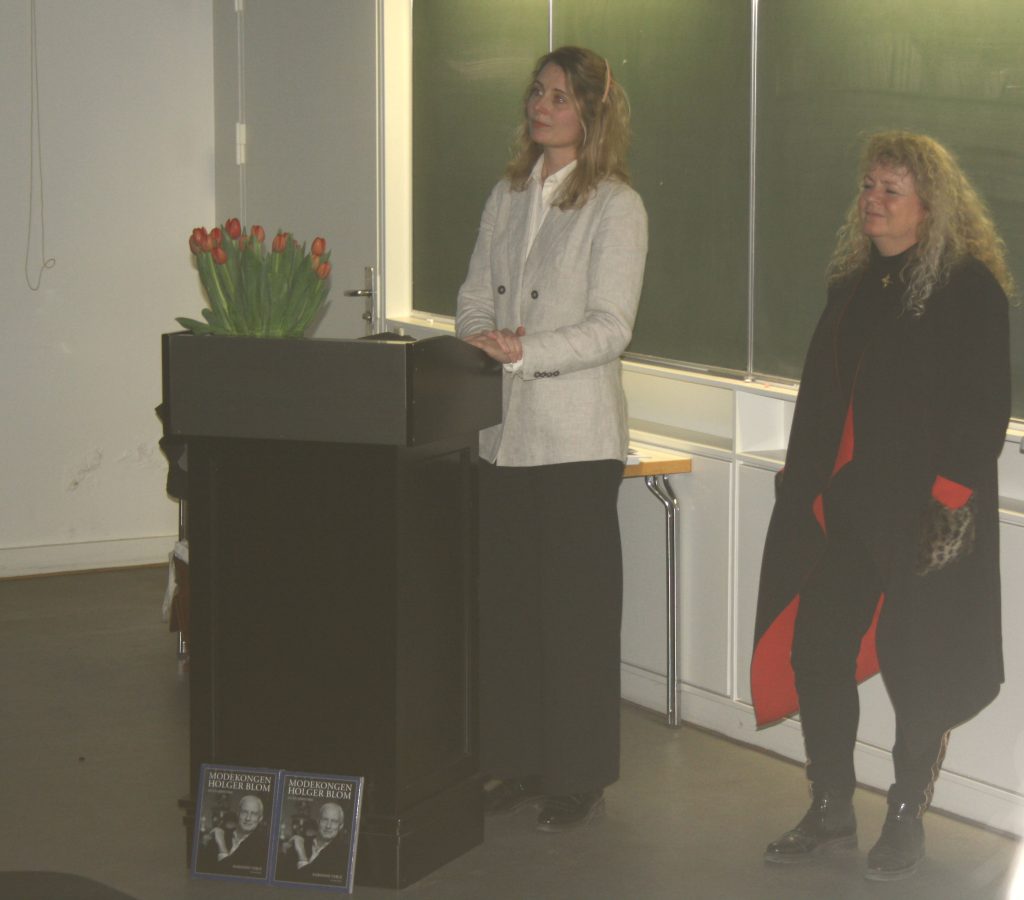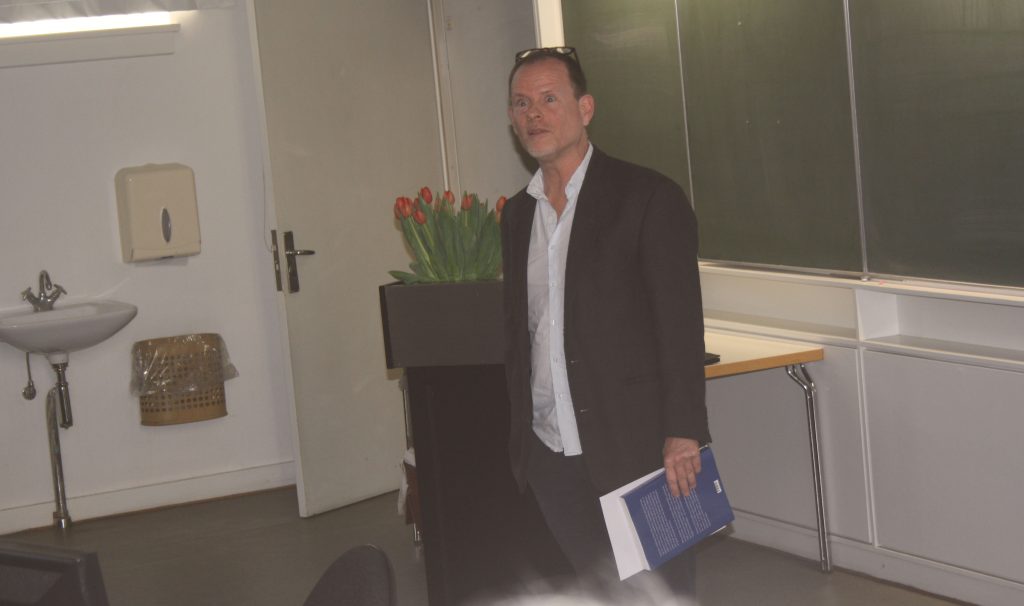Let’s face it. This blog has never been about fashion. My skills and interests unfold themselves elsewhere.
But being a journalist, I am always in for a great story – and the life of Danish fashion designer Holger Blom is certainly one of these great stories. This time kindly hosted by old friends of this blog: Hertoft-afternoons at Rigshospitalet. Read more about sex at the age of 65+ and the sexy Wagner.
As Holger Blom said it himself: “We all make mistakes – the question is how do we live with them?”. Well, you are about to find out, dear reader.

His story is picked up by author Marianne Verge in her current autobiography on Holger Blom. It is always exciting to learn about Danes who made it out in the big world. But Marianne’s greatest motivation to tell the story of Mr Blom is that he grew in the same town as she did; Skanderborg.
He must have walked the same streets as her, perhaps even thought the same thought as he did so. That is the reason why she feels that it makes her very close to him as a person, even though he died back in 1965 (while he was fitting the dress of Her Royal Majesty, Queen Ingrid).

But Marianne (left) is not the only one who is fascinated. This afternoon she has teamed up with Lene Høst-Madsen (right) from Museum Skanderborg. At the town’s museum they are very proud of their famous follow-townsman, in fact they have created a full exhibition about his life in Autumn 2018.
The exhibition turned out to be so popular among the local women at the age og 60+ that some of them have visited it no less than 8, 10 or 12 times, each time bringing new friends, whom they proudly guided through the life of Holger Blom.

Mr Blom did own an extraordinary talent for dresses. Already at the age of 8 he could spend hours creating costumes for the characters in his toy theatre. As an adult fashion designer, he ended up creating no less than 75 unique costumes for the Royal Danish Theatre – look at the Frog Dress above!
During Marianne Verge’s research we learn that Mr Blom loves to be among the beautiful actresses at the time, like Bodil Kjer. He calls them “his muses”. However, he has no sexual interest in any of them, because he is clearly homosexual. Which does not make your life any easier when you are the child of a wealthy factory-family in Jutland, which has earned its money on developing and selling farming machines in early 20th century.
During her research for the book, Marianne Verge has read several letters from Holger Blom’s father, Christian Blom, to his son, dated 1920-1924. He is strongly concerned about his son’s male interests, and it gets worse as Holger drops out of university to work in a dress shop.
“Is the owner of this shop a married man?”, asks the concerned father.

After her mother’s death in 1921, young Holger Blom faces some troubled years. Already at high school he is very close with fellow-student Preben Birk (who also became a fashion designer). The boys are thrown out of school, apparently because they were “not fitted for the academic work”. But their grades do not prove so … It is more likely that the were too closely related for two men, too creative and to unfit for the standards of society of that time.
But Mr Blom is not to be stopped. In early 1930s he buys his first sewing machine, which starts his career as a fashion designer for nearly four decades. Most famous are the dresses, here printed on tote bags.

But since this is an Hertoft-afternoon, let’s return to Mr Bloom’s sexuality for a while.
It is clear from the letters that Christian Blom writes to his son in 1924 that he tries to teach him about how to have sex in the right way. Sex is supposed to be with a woman, you must use a condom (he uses the French-Danish term “kardong”) and you must always be careful to wash your penis after sex.
This shows a man of great scientific knowledge, considering the time in which sexual education was close to non-existing. He also asks Holger to burn the letter after reading it – which he obviously did not do.
Homosexuality is still not accepted. The father writes to his son that he is happy to reach him in time to save him from this (male) scoundrel that he shares his flat with. He has also sent him a frame for a picture of the local pharmacist’s daughter to put in his room. As a much more suitable person to direct his affection and marriage towards.
Holger Blom never took his father’s advice on sexuality. Until his death he was known to be homosexual. In his late years with a mysterious young boyfriend called Bo, who has to leave his wife and child to be with Holger Blom.

The Hertoft-afternoons at Rigshospitalet is hosted by professor Christian Graugaard in cooperation with Sex & Samfund and Center for Sexology Research at Aalborg University. These are free lectures for everyone who is interested in sexuality; concerning culture, medicine and history.
This season the number of lectures has been cut down from 6 to 4 every six month, so unfortunately there will be no more lectures until Autumn 2019. On the other hand, all the lectures this season has been connected by a common frame; autobiographies. This means that we have been close to – among others – journalist Inga Binga (John F. Kennedy’s Danish romance), author Karen Blixen and composer Carl Nielsen.
I look forward to the Autumn-season already!

Before we leave the life of King Fashion Holger Blom it is worth mentioning his way of making business – or rather the lack of it.
As a nice suprise, some of his old staff from the dressmaker’s workroom in Copenhagen were among the audience this afternoon. They shared the tales of a much beloved boss, who cheerfully greets everyone in the room with “all the beauties” or even enters his office wearing only underwear, when he is struck by creativity(!). But creativity costs, and Holger Blom is not financially responsible. One of his dressmakers remembers payday as chaotic.
On Fridays the staff would form a queue outside Mrs Larsen’s office, and at one point the poor accountant would run out of money, and she would have to hide under her desk. Those in the staff who have not been payed would have to borrow money from those who were lucky this week – and student still living with their parents were always last in queue. But somehow, they figured it out. As the staff say: “He was an artist, this is what to expect.” Well, perhaps it was also other times in 1950s fashionable Copenhagen …
Today there are very few original Holger Blom-dresses in trade. But insider sources from the Hertoft-afternoon let us know that if we ever come across a vintage dress with a ribbed waistband and an insewn bra with the label “Hollywood Maxwell” it is probably a disguised Holger Blom-design. And extremely pricey. So I will just stick to the much cheaper – but still lovely – tote bags.
I usually link to more free fun. But since the Autumn-programme is not ready yet, you will have to stay tuned on the blog this time. And (re)read some of the previous posts from Hertoft-afternoons 🙂





